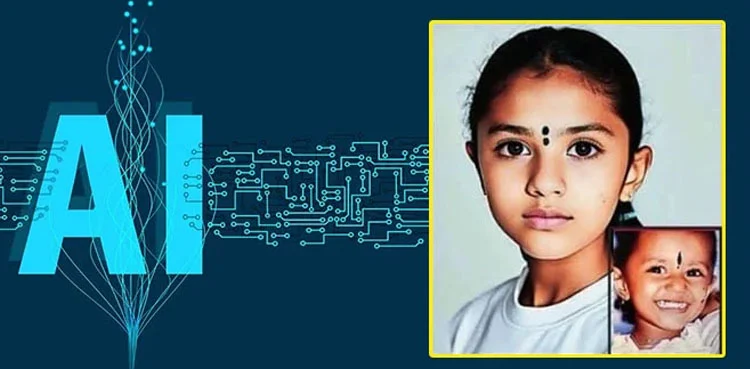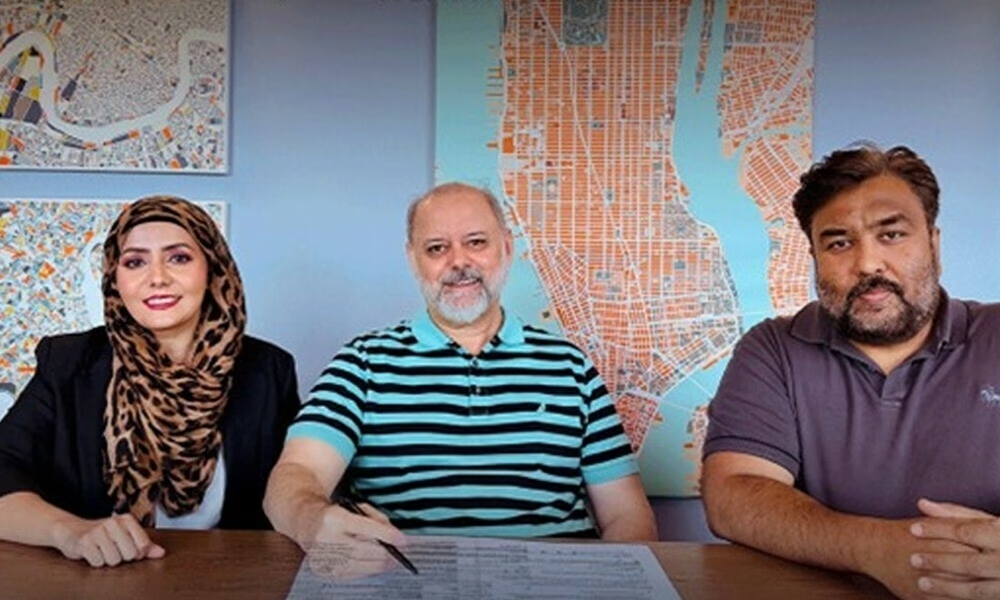Chennai – Thirteen years ago, a 2-year-old girl named Kavita vanished without a trace from outside her home in Tamil Nadu. Her disappearance on September 19, 2011, left her parents devastated and searching tirelessly for their beloved daughter. Despite the passage of time, their hope remains undiminished, recently bolstered by a new development involving cutting-edge technology.
According to Indian media, the police have now turned to artificial intelligence (AI) to aid in the search. With the help of AI, they have created an image of what Kavita might look like today at 14 years old. This development has brought a renewed sense of hope and determination to her parents, who have never stopped looking for their daughter.
The Day She Disappeared
Kavita’s disappearance occurred around 5 pm while she was playing near her house. Her sudden absence was immediately noticed, and her frantic parents began searching the area, calling out her name and asking neighbors if they had seen the little girl. Their efforts, however, yielded no clues, and the sense of dread grew as the hours turned into days.
The police were notified promptly, and an investigation was launched. However, despite their efforts, no leads were found, and the trail went cold. For years, the family held on to the hope that some new piece of evidence would emerge, leading them back to their daughter.
The Case Closure and Legal Battle
In 2022, the family faced a new heartbreak when they learned that the police had closed the case. This decision was devastating for Kavita’s parents, who felt abandoned by the authorities in their ongoing quest to find their child. Determined to keep the search alive, Kavita’s father, who works at a cooperative bank, took legal action against the police’s decision.
He filed a case in the Saidapet Court in Chennai, challenging the closure and seeking the court’s intervention to compel the authorities to continue their efforts. The court’s order to reinvestigate the case led to the involvement of advanced technology in the search.
The Role of Artificial Intelligence
With the court’s mandate, the authorities turned to AI technology to generate an updated image of Kavita. Given that the family had only two old photographs of her, taken during a wedding ceremony when she was just one or two years old, creating an accurate representation of her current appearance was a challenge.
The AI-assisted image of Kavita as a 14-year-old was a poignant moment for her parents. Upon seeing the computer-generated likeness, they were overwhelmed with emotion. The image provided a visual anchor for their hope, making the possibility of finding their daughter feel more real and attainable.
Renewed Hope and Determination
The creation of the AI image has revitalized the search for Kavita. Her parents believe that this new tool significantly increases their chances of finding her. They are now urging anyone who recognizes the girl in the AI-generated image to come forward with information.
The case has drawn widespread attention, highlighting both the pain of the long search for a missing loved one and the potential of technology to provide new avenues for hope. The use of AI in this context demonstrates how modern advancements can be harnessed to address age-old problems, bringing renewed hope to those in seemingly hopeless situations.
The story of Kavita’s disappearance and her parents’ relentless search is a poignant reminder of the enduring power of hope and the lengths to which parents will go to find their missing children. The intervention of artificial intelligence in this case has provided a new beacon of hope, illustrating the transformative potential of technology in solving real-world problems.
As the search for Kavita continues, her parents remain steadfast, buoyed by the belief that the AI-generated image might finally lead them to their daughter. Their story is one of heartbreak and hope, a testament to the unyielding human spirit in the face of unimaginable loss.



